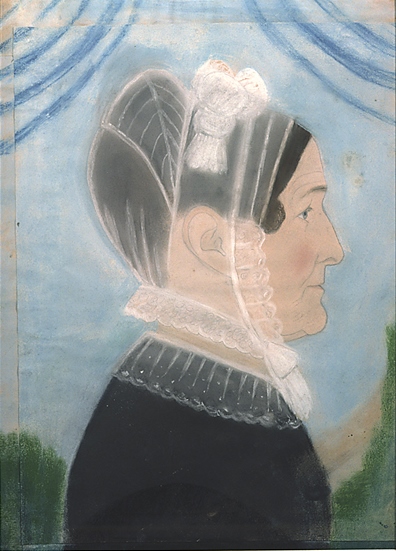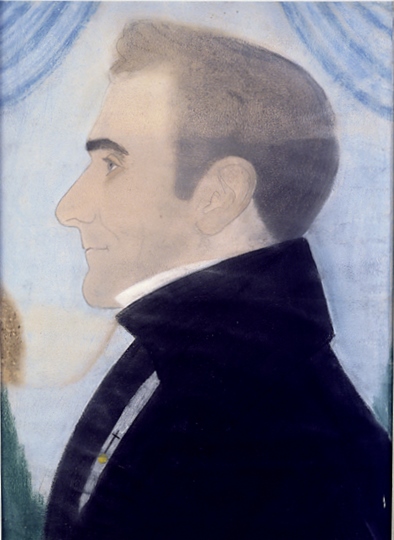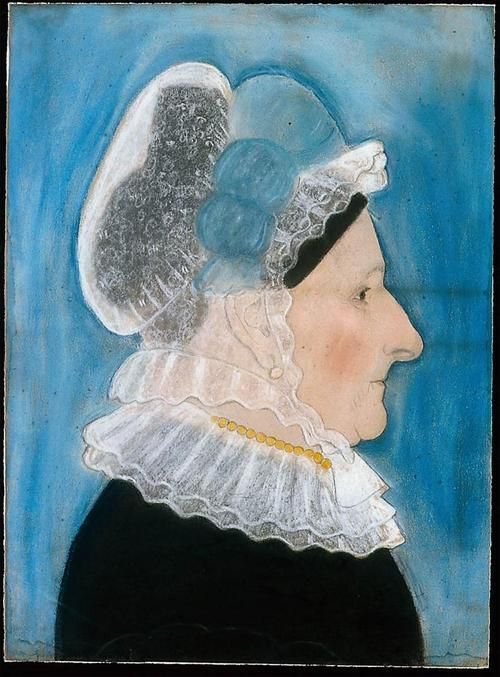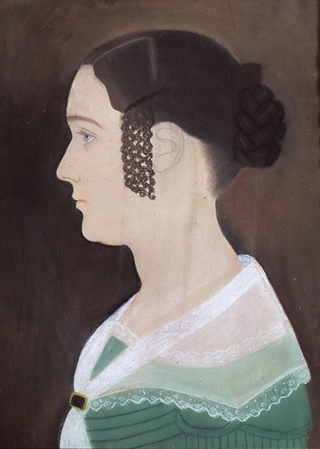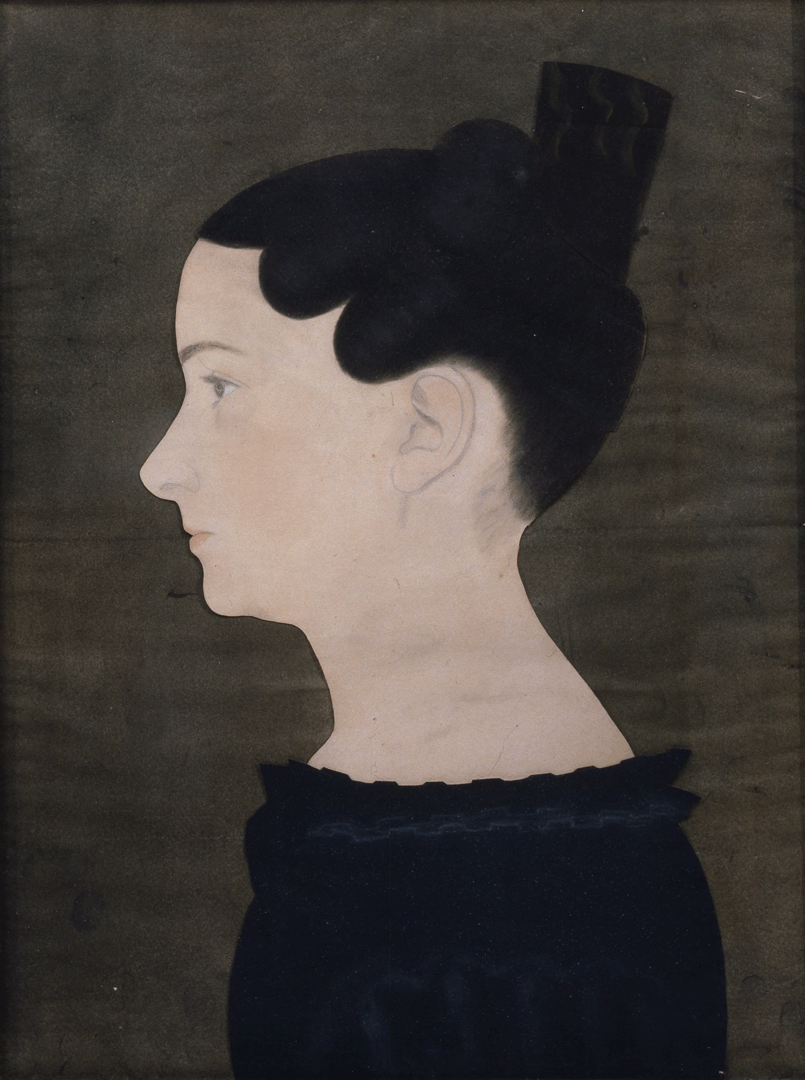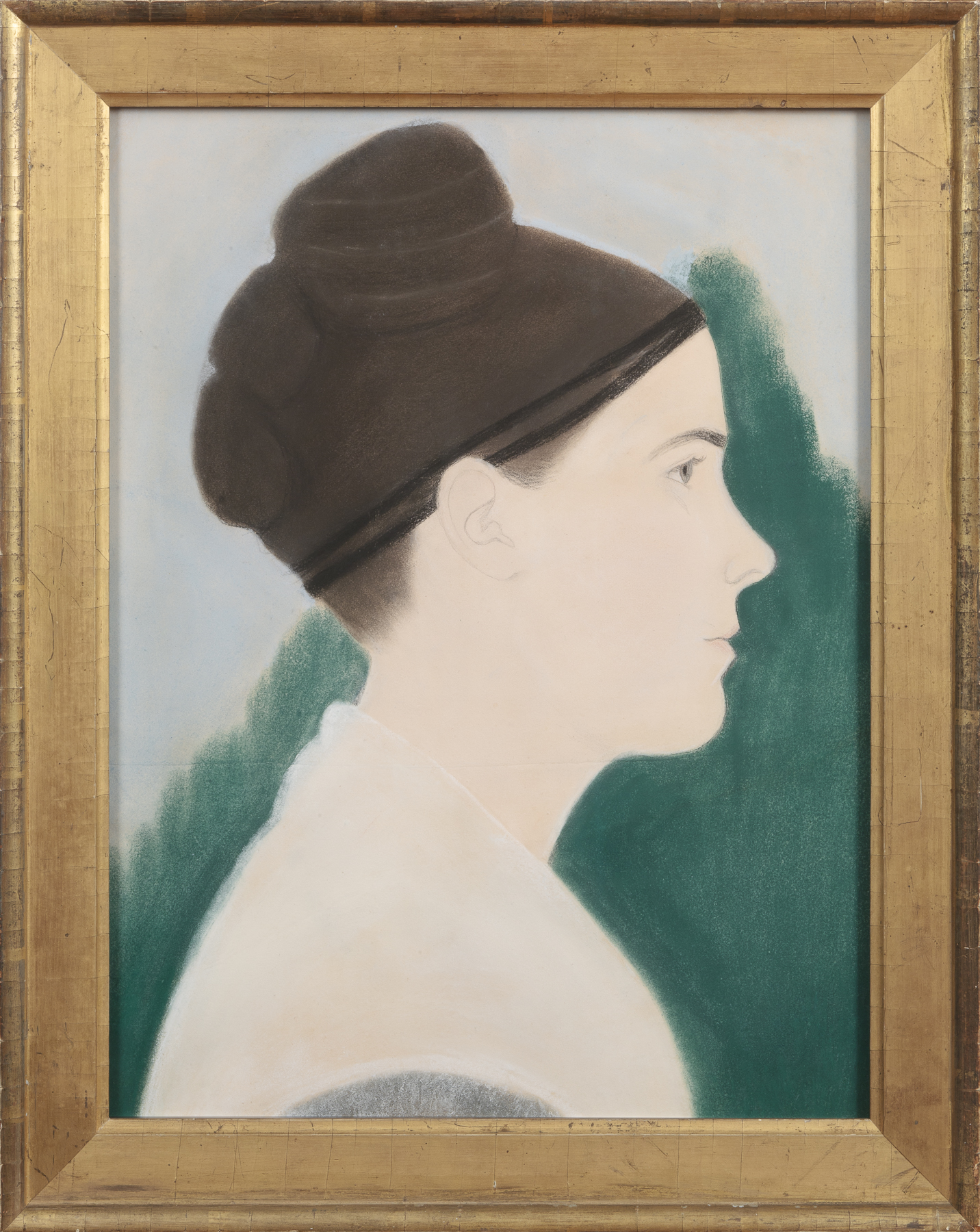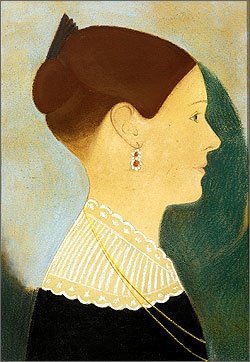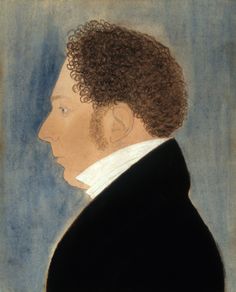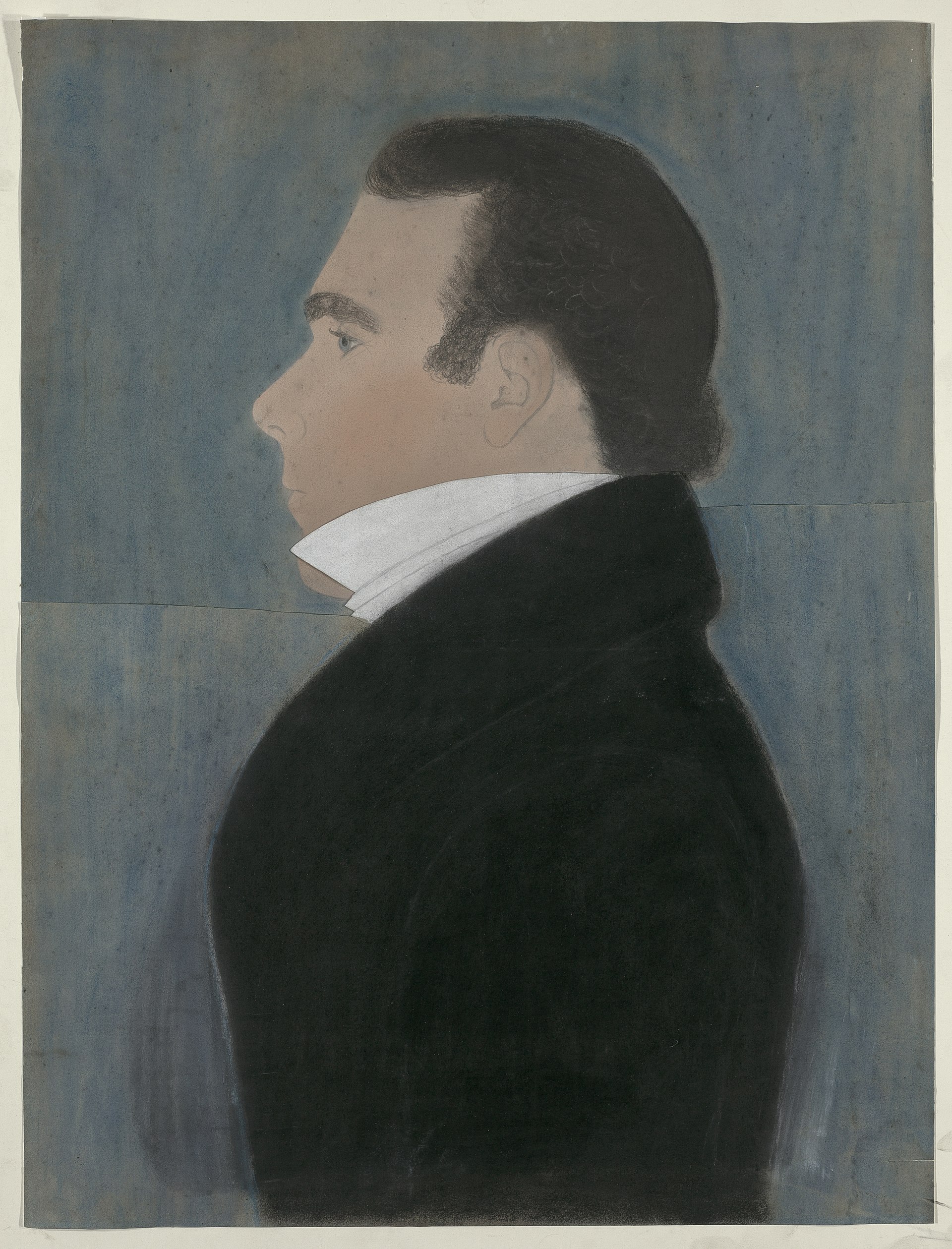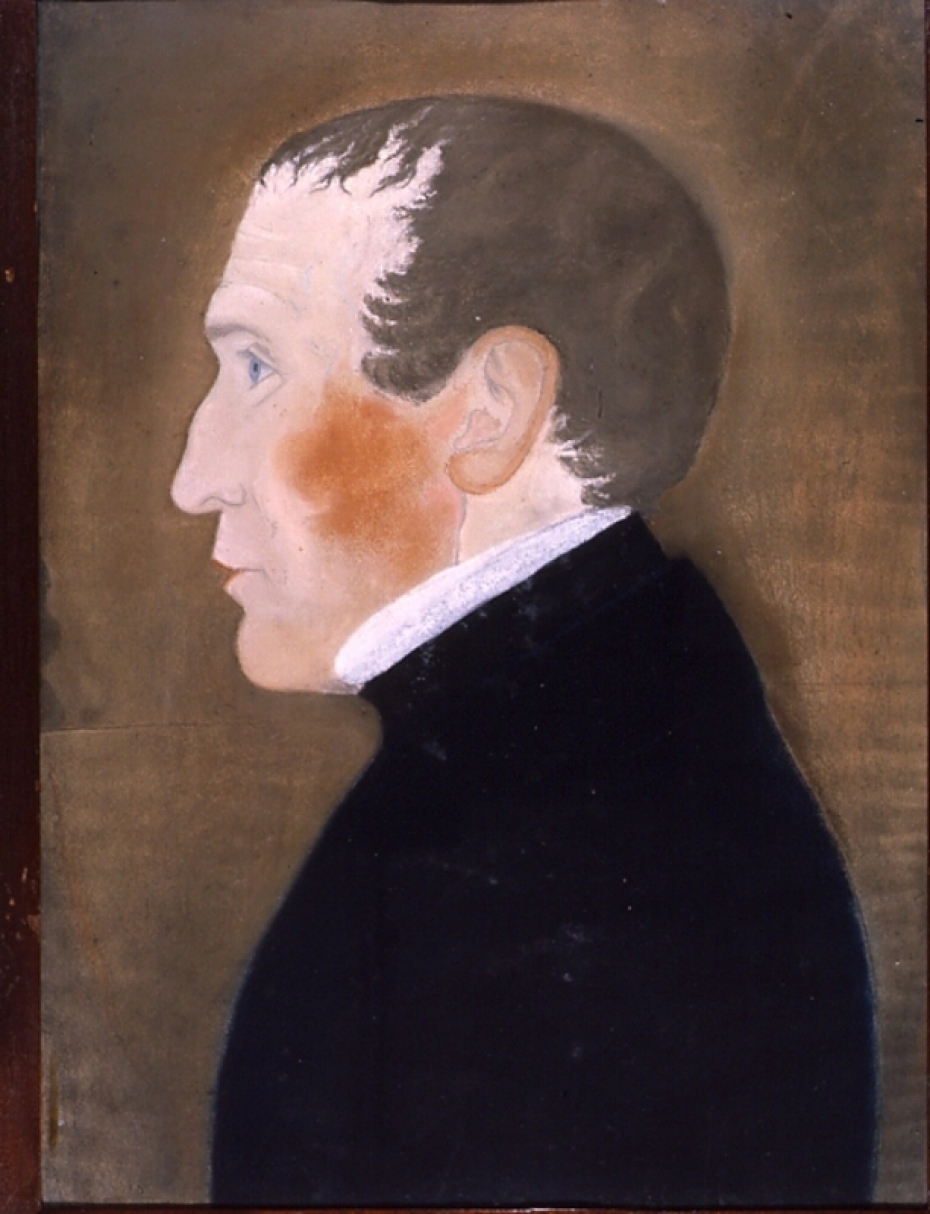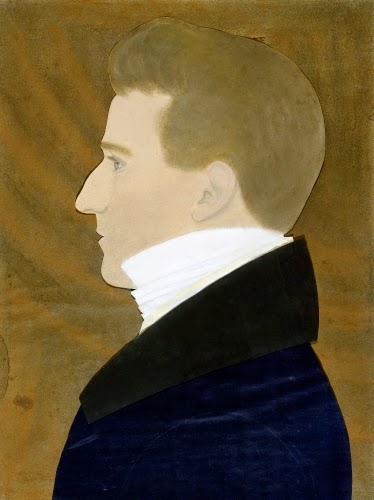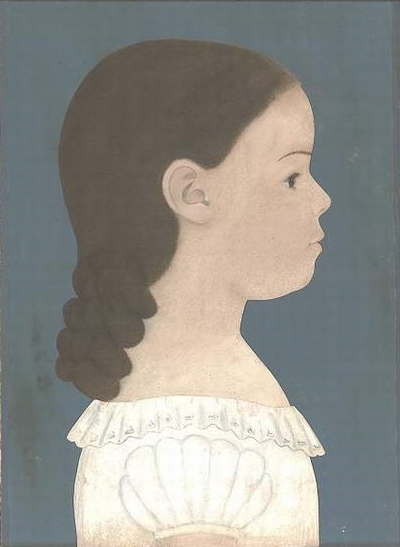Ruth Henshaw Miles Bascom, also known as “Aunt Ruth” was a twice married woman who raised children, many many children in her household (sometimes as many as 10)—being paid to help them, teach them and if their parents were not around, to foster them. She was a good wife of a minister—doing good works, caring for the poor, tending to the sick. She was also a solid diarist, who had kept diaries since her late teens through the end of her life….with notations from the weather and daily activities (in the early diaries) to details about her town’s statistics, births, deaths, weddings, expenses, cashflow and the like. The American Antiquarian Society has a very interesting pdf with notes and a list of the diaries they have in their collection. Worth taking a look.
Her portraits according to the Fenimore Museum in Cooperstown, NY
“As a minister's wife, Bascom began drawing as a pastime, but was soon traveling to other areas to draw portraiture on commission. She kept a daily journal in which she recorded making over a thousand portraits for money, services in kind, and as tokens of affection. Bascom rendered all her portraits in life-size profile. In order to create a realistic image, she first outlined a cast shadow of the sitter on her drawing paper. She then colored the picture using pastel crayons.”
The way I see it is that Aunt Ruth, in the tradition of parlor activities, would trace the sitter’s profile like a silhouette artist would have done. What is interesting — another point of intersectionality—is that sihouette cutting was popular in America from 1790 until 1840. Why 1840? We know this…the advent of photography!
Silhouette cutting was an activity that was either hired, or something one would do at home for amusement. The twist that Aunt Ruth brought to the process is she took the profile and painted it, using pastels and sometimes colored paper/ foil to dimensionalize the work. What we have is a singularly fresh, modern representation of the sitter that presents the sitter in 1840 as someone we could meet today. This work reminds me of children’s book illustration, and Alex Katz’s portraits.
Profile Portrait of a Young Woman, Her Braided Hair @orn with a comb
I particularly love the sensitivity of her line work, the blends she does with the back of the women’s hair, and the flat background colors—that complement the sitter, but not overwhelming the likeness.
The image to the right—she takes one step further. Aunt Ruth uses the foil that she used as accents in her portraits and makes it dominant—feeling almost renaissance in feeling and tone. I am so taken with this from the odd placement of the figure on the field, to the use of materials, color, the gradient hair, the linework…its all pretty elegant given the world of 1840, of Ammi Phillips’ grand portraits, the triangular ladies of Field, and the advent of daguerrotypes. Surprisingly, these are not rote images and to me, transcends the change in technology as Bascom changed the process and technique—-bringing silhouettes along with her engaging work.

